Welcome to the Group Web Page of Jack Simons
Henry Eyring Scientist and
Professor of Chemistry and
Theoretical Chemist
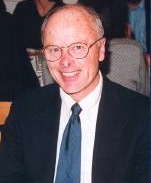
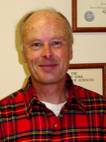
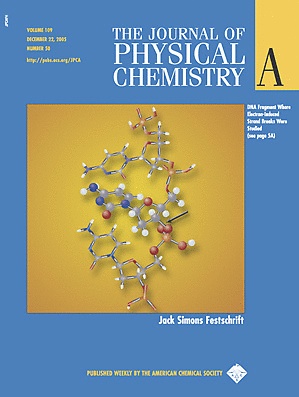
Jack
Simons JPC Festschrift
Fields of Interest: Theoretical Physical
Chemistry, Negative Molecular Ions
Department of
Chemistry
University of Utah
Salt Lake City, UT 84112
and Henry Eyring Center for
Theoretical Chemistry
E-Mail me here.
Theoretical
Chemistry Web Site
2012
and Later Web Site for Theoretical Chemistry and Molecular
Anions
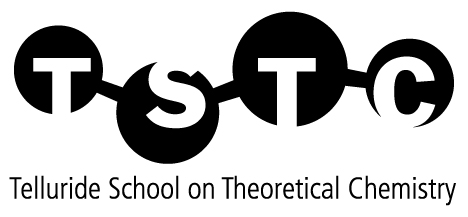
Web Site for new Telluride
Schools on Theoretical Chemistry
Free
Second Edition of Introduction to Theoretical
Chemistry
The July, 2010 group
reunion
is highlighted at this link. For
a photo showing most of those present, click
here.
Photo showing old group members who attended the 2009 ACS
meeting in Salt Lake City (below)
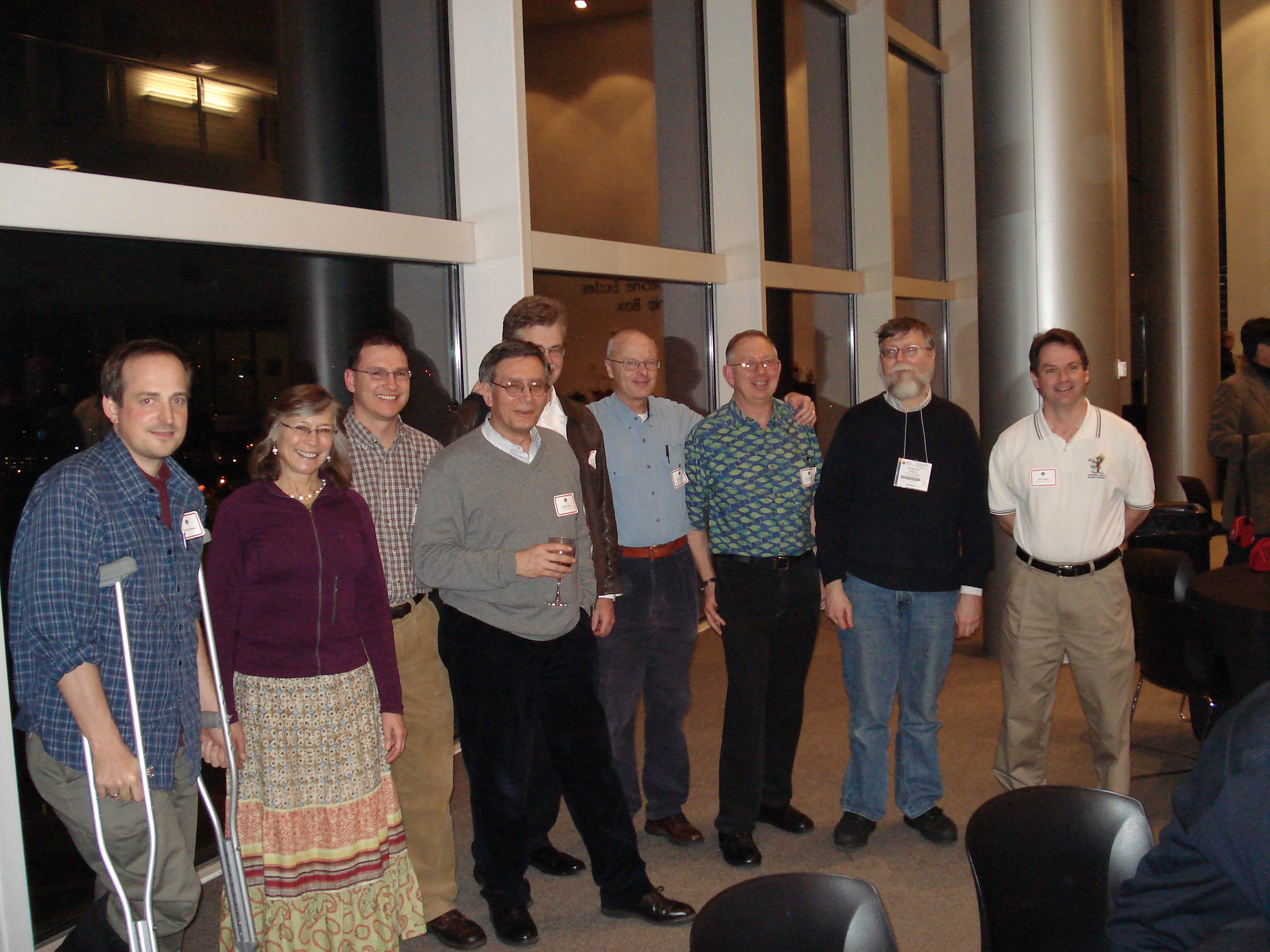
Wim Cardoen, Jeanne McHale, Mike Salazar, Zlatko
Bacic, George Purvis, Jack, John Kenney, Ken Jordan, Jerry
Boatz
Professor Jack Simons' research group has made contributions
to theoretical chemistry primarily in the following areas:
1. In the 1970s, his group developed the
equations of motion (EOM) method for
computing molecular electron affinities directly rather than by
computing separately the energies of the neutral and anionic species
and then subtracting. This work gave rise to many further advances,
evaluations of electron affinities, and fostered further development
of the EOM method by others.
2. Also in the 1970s, his group was among the first in the
chemistry community to study the binding of electrons to closed-shell
polar molecules. These studies of dipole-bound
anions generated many predictions about such spieceis by
Jack's group and later by many others.
3. In the 1980s, the Simons group was among the earliest to use
stabilization and complex coordinate methods to study the
metastable states of molecular
anions.
4. Also in the 1980s, they developed the theoretical framework for
understanding how molecular anions convert some of their
internal vibration-rotation energy into
electronic energy and thereby eject an electron.
5. Throughout the 1980s and 1990s, they developed equations for
the geometrical first (gradients) and
second (Hessians) derivatives of the
energy for a wide variety (SCF, MCSCF, CI, MPn, CC) of wave
functions, and they showed how to use such information to
"walk" on potential energy surfaces to
locate minima and transition states.
6. In the 1990s and 2000s, the Simons group explored several
classes of unusual molecular anions including double-Rydberg anions,
multiply charged anions, hypervalent anions, and anions containing
carbon in a square planar tetracoordinate geometry.
7. In the 2000s, they explored how electrons attach to
DNA and fragment it (causing so-called
strand breaks) and to positively charged
polypeptides to cleave disulfide and
N-Ca bonds.
Professor Simons has also been very involved in
theoretical chemistry education. He
wrote several textbooks on the subject, has created web sites on
theoretical chemistry, and has recorded on-line streaming videos on
this subject. These materials can be accessed from his publications
link below.
Jack is married to Peg Simons, M.D. (below)
whom he met while in graduate school at the University of
Wisconsin.

Jack is the Author of the Theoretical
Chemistry Web Page designed to
offer students and non-experts an introduction to this field and to
provide a wide range of web links to practicing theoretical chemists
and science education sites. In 2005, he hosted an ACS PRF funded
Summer
School on theoretical chemistry in
Park City. You can download the complete set of talks from this
School by going to the link above. After the Summer School, many
members of Jack's group from the past 34 years gathered in Park City
for a reunion. A PowerPoint file showing (old) pictures of some of
the people who came and some who did not can be accessed
here.
A new valuable educational
resource you should be aware of has been provided by MIT under their
Open
Courseware
initiative. Others that are developing such open courseware sites
include Utah
State,
China,
Japan,
Johns
Hopkins,
Taiwan,
Paris
Tech,
Tufts,
Spain/Portugal
as well
as Learn
Stuff.
Hopefully, more
universities and research institutions will follow this example.
Personal
Perspective About a Career in Theoretical
Chemistry
I am proud to call myself a
theoretical chemist and I emphasize that,
in so doing, "chemist" is
the noun and theoretical is the adjective.
I have always been interested in chemistry- that is, molecules and
chemical materials including their physical and reactive properties,
their colors, smells, and tactile feels. So
being a chemist is the most
important thing to me in my career. The
theoretial part of my "title" has to do with the tools I use to study
chemicals and chemistry. I am happy to have devoted much of my
research and educational career to expanding the impact that theory
(the concepts, computational methods, theoretical constructs and
equations) can have within the science of chemistry. I look forward
to continuing along this path and to inspiring younger scientists to
do likewise.
Books
Written by Jack Simons

An
Introduction to Theoretical
Chemistry, J.
Simons, Cambridge University Press (2003)- cover shown
above.
Second
Quantization-Based Methods in Quantum
Chemistry, P.
Jorgensen, and J. Simons, Academic Press (1981)
Energetic
Principles of Chemical
Reactions, J.
Simons, Jones and Bartlett Publishers, Inc. (1983)
Geometrical Derivative of
Energy Surfaces and Molecular Properties, P. Jorgensen, and J.
Simons, eds., D. Reidel Publishing Company (1985)
Quantum
Mechanics in
Chemistry, J.
Simons, and J. Nichols, Oxford University Press (1997)
A foreign reprint very
inexpensive version of the textbook whose cover is shown below can be
found at this web
link.

Historical insight into
some of the Simons group's contributions to theoretical chemistry
from the 1970s to the present.
Motivated by our strong interest in molecular
anions, in the 1970s our group developed a new tool, called the
equations of motion (EOM)
method for computing electron binding energies
(i.e., electron affinities (EAs) and ionization potentials (IPs)) in
one step rather than by solving the Schrödinger equation for the
anion and neutral molecule and then subtracting the two electronic
energies.
We carried out the derivations of the requisite
equations that we subsequently encoded within the
Møller-Plesset perturbation framework through third order.
This advance was important because EAs and IPs are intensive
quantities but the total energies E obtained from the
Schrödinger equation are extensive; hence, as the system size
grows, subtracting two total energies (E1 and E2) to obtain an EA or
IP will fail. The EOM methods that we developed were applied to a
very large number of molecular
anions- one of our group's areas of expertise.
It turns out that the working equations of our EOM theory are
identical to those arising in so-called Greens function theory that
several other groups have utilized (primarily to examine IPs). More
recently, such direct-calculation methods have been extended to the
coupled-cluster (CC) and multiconfigurational (MC) realms by other
groups.
In collaboration with the Jørgensen group
in Aarhus, our group used the unitary exponential parameterization of
variations in wave function configuration amplitudes {CJ}
and LCAO-MO coefficients {Ci,m} to derive
equations for the first
(gradient) and second (Hessian) derivatives of SCF, CI, MPn, CC, and
MC-SCF wave functions. Information about how
the electronic energy varies along all molecular coordinates plays a
central role in computing vibrational frequencies and in
characterizing reaction paths and transition states. This
collaboration also produced several
new
methods for using gradient and Hessian
information to "walk uphill"
along reaction paths to locate transition
states.
Our group made use of a variety of
bound-state/scattering-state hybrid theories (e.g., stabilization
methods and complex coordinate methods) to develop (and apply to
anions of interest to us) techniques that allowed us to characterize
(by energy and lifetime or energy uncertainty)
metastable states of molecular
anions.
We have made us of the tools that we and others
developed to study a very wide range of molecular anions, including:
a.
dipole-bound
anions in which the single excess electron is
bound largely by the dipole potential of the neutral
molecule;
b. doubly-
and triply- charged anions in which the
Coulomb repulsions among the two or three excess electrons both
destabilize the total energy but also produce repulsive Coulomb
barriers that inhibit any electron's departure;
c. anions
formed when an electron binds to a
zwitterionic
molecule (e.g., many amino acids have low-energy zwitterions
structures);
d. DNA
anions formed when an electron attaches to one
of the bases of DNA and subsequently causes a sugar-phosphate C-O
bond cleavage via a through-bond electron transfer event;
e. protein
fragmentations that occur when an electron
attaches to an antibonding s*
orbital whose energy is stabilized by a nearby positively charged
site (e.g., a protonated amine site);
f.
hypervalent
anions in which one or more atom exceeds its
conventional valence range.
Most of our studies of chemical species and
chemical problems bring to bear
electronic structure
methodologies, but often we also use
statistical
mechanics and/or
molecular dynamics
tools in these projects. As a result, students
and postdocs in our group gain a broad range of experience and
knowledge within the various disciplines of theoretical chemistry.
______________________________________________________________________
More About our Research
Interests
I view theoretical chemistry as the most wonderful
discipline within molecular sciences because of its tremendous
breadth of application and its power in understanding nature's
behavior. One has to know a lot of "real" chemistry to be a
theoretician, but you also have to be good at thinking of how to
quantitatively express, in terms of equations, the behavior and
properties of the molecular system you are studying. I recently
completed a project supported in part by NSF that involved creating a
web site (simons.hec.utah.edu/TheoryPage)
describing what theoretical chemisty is and how it contributes to
chemical education and research. I encourage you to look at this
site.
In my opinion, theory seeks (i) to assist
experimental chemists in interpreting experimental data both by
providing the mathematic equations that relate experimental
measurements to molecular properties and by performing computer
simulations of experimental situations, and (ii) to search for new
chemical species and predict their chemical, physical, and
spectroscopic characteristics so that experimentalists can be guided
to study them. This ability to study new molecules and new materials,
that may involve new bonding situations or unusual chemical
structures, is how theory can help in the exciting task of creating
"designer materials".
Much of what we and other theoretical chemistry research groups do
involves the use of mathematical analysis, physical modeling, and
computer simulation on machines ranging from the PC and Macintosh
level, through desk top workstations, to vector and parallel
supercomputers. I myself derive the greatest joy from using my brain
rather than any computer, but it is often essential to use these
machines to obtain quantitative numerical predictions.
In the recent past and for the immediate future, the particular
species and phenomena on which our research group's efforts are
focused include:
1. The development of new theoretical methods for
treating electron-electron interactions, chemical
reaction paths, electronic energy flow and the forces
which govern molecular dynamics. Applications of such techniques
to problems involving the electronic structure of novel organic
and inorganic molecules and ions.
2. Developing a systematic understanding of the bonding,
stability and charge distribution of many negative molecular
ions, including multiply charged anions and anions
arising when an electron attaches to a biological molecule such
as a protein or DNA.. There is a very nice negative
ion web site linking to several other scientists who work in
thi s area.
In addition to gaining knowledge about stable anions (i.e.,
anions which have positive electron binding energies), we are
exploring metastable negative ions. In these
investigations, we are interested in the lifetimes of the anions
both with respect to electron loss and with respect to
dissociation. Such lifetimes determine whether these temporary
anions can provide efficient intermediates for converting
electronic kinetic energy into internal (vibrational-rotational)
energy. Because these metastable ions are not bound, we cannot
employ the conventional variational methods of quantum chemistry
to obtain their energies and lifetimes; we, therefore, had to
develop new tools to achieve this objective.
3. Exploring vibration-to-electronic coupling which can
govern the rate of electron detachment from vibrationally hot
anions. Double-Rydberg anions, metal cluster ions, and
dipole-bound anions are all under active investigation.
4. Quenching of electronically excited atoms, reaction paths
for tautomerization in solution, reactive collision dynamics,
small main group element clusters, and the nature of Rydberg
states of small molecules are also being studied.
5. How electrons attached to biological molecules,
including proteins and DNA, can give rise to new reaction pathways
and new intermediates that can play important roles in these
molecules's behavior. For example, electrons attach to protonated
fragments of proteins and induce characteristic bond-breakage
patterns. We are trying to develop good theories for understanding
and predicting these protein fragmentation patterns because
they play crucial roles in using mass spectroscopy to determine
proteins' primary structures.
If you would like to view some of the seminars that Jack has
presented in recent years, go to the following links:
For a seminar on time-dependent quantum dynamics treatments of
electron detachment click here.
For a seminar on novel anion structures and dynamics, click
here.
For a seminar on unusual anions and dianions, click here.
For a seminar on new species with new kinds of bonds, click
here.
To see what I tell my mathematics colleagues when they ask what we
do, click here.
To learn how vibration-rotation energy can be converted into
electronic energy, click here.
Here is a talk I recently gave in Mississippi.
And another talk I gave at Argonne
National Lab.
In Sept. 2002, Jack went to Stanford to help his friend, John
Brauman, celebrate his 65th birthday and gave a seminar
on damage to DNA caused by low-energy electrosn.
In January, 2003, Jack presented the David
M. Grant Colloquium, and in April, 2003, the Robert
S. Mulliken Seminar at the University of Georgia.
Also in April, 2003, Jack was recognized by his alma mater, Case,
as its Distinguised
Alumnus, and he gave a science talk on this occasion.
In September, 2003, he gave a seminar at the University
of Gdansk in Poland.
_______________________________________________________________________________________________________________
In the summer and fall of 2002, Professor Jan
Linderberg visited our group again and presented a series of lectures
formualted as a class on many-electron theory. You may access the
material Jan presented by connecting to the following .pdf
links.
Many-electron
theory
Green
functions
Particle-hole
Polarization
Response.
These were wonderful lectures that likely are not
available anywhere else.
Education/Awards
- B.S.in Chemistry, 1967, Case Institute of Technology
- Ph.D. in Chemistry, 1970, University of Wisconsin, NSF
Predoctoral Fellow
- NSF Postdoctoral Fellow, 1971, Massachusetts Institute of
Technology
- Alfred P. Sloan Fellow
- Camille and Henry Dreyfus Foundation Fellow
- J. S. Guggenheim Fellow
- David P. Gardner Faculty Research Fellow
- University of Utah Distinguished Research Award, 1985
- Appointment to Henry Eyring Endowed Chair, 1989
- International Academy of Quantum Molecular Sciences Medal,
1983
- Fellow, American Physical Society
- R. W. Parry Teaching Award, 1996
- Chairman, American Conference on Theoretical Chemistry,
1996
- Utah Award of the ACS, 1998
- Robert S. Mulliken Lecturer, 2003
- Case Western Reserve University Chemistry Distinguished
Alumnus Award, 2003
- David M. Grant Lecturer, 2003
- Rosenblatt Prize, University of Utah, 2005
- Founder, Telluride Schools on Theoretical Chemistry, 2007
- U. of Utah Graduate Student and Postdoctoral Scholar Mentor
Award, 2010
- W. Chupka Lecture, Yale Univ. 2010
- Hirschfelder Prize in Theoretical Chemistry 2013
- AlmlÜf-Gropen Lectures, Oslo and Troms┐, Norway 2017
A few highlights of our more recent
works:
In addition, links to the text of several more recent papers can
be accessed in PDF format dealing with:
Our work on mixed valence-dipole bound
anions.
Binding an electron to a molecule with a large dipole moment to
form a so-called dipole-bound anion (also
see this).
Our work on solvation effects on
atomic and molecular ions.
A paper in which we predict molecules in which carbon
can adopt a planar tetracoordinate environment. A collaboration
with experimental friends on such a
species is also available.
A model describing the kinetics of thermal
decompostion of certain microcrystalline solids has been produced
and tested.
We examined how electronically excited Zn
atoms react with H2 and HD, and how Al+
ions react with H2 and HD.
An overview of much of our efforts to describe how anions
eject electrons via non-Born-Oppenheimer transitions is
available.
We predicted that chemical bonds can
be formed by Rydberg orbitals.
We examined the dissociative
recombination that occurs when H3O+ reacts
with electrons to form H3O.
An overview of
theoretical studies of molecular anions.
A discussion of the roles played by internal Coulomb
repulsion in multiply charged anions.
We examined how low-energy electrons can attach to DNA's
bases and then undergo a through-bond electron transfer event to
cause a single strand break.
We studied the electronic metastability of the sulfate
dianion, which is known to be unstable in the gas phase.
We examined a variety of biological molecules to which an excess
electron is attached: 1,
2, 3,
4, 5,
6, 7
Our most recent work on how low-energy electrons may damage
DNA.
A chapter Jack wrote for
the encyclopedia on chemical physics and physical chemistry dealing
with electronic structure theory.
A review chapter that Jack wrote dealing with theoretical study of
molecular
anions.
Short Biography
Jack Simons is a theoretical chemist who has studied the
electronic structures and dynamical behavior of a wide range of
negative molecular ions. His research spans electronic
structure theory and chemical reaction dynamics.
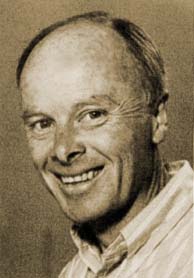
His group was among the earliest to characterize so-called
dipole bound anions, double Rydberg anions, and
chemical bonds involving Rydberg orbitals. Their work on
vibrational/rotational/collisional to electronic energy flow
helped interpret various electron auto detachment experiments. Many
of their research efforts have been undertaken in collaboration
with experimental groups at Utah and elsewhere.
Jack has authored three graduate level textbooks in quantum
mechanics in chemistry as well as over 250 scientific papers. He has
graduated ca. 60 Ph.D. and postdoctoral students and has had numerous
visiting scientists in
his
group. Jack is very proud of all of these friends, many of
whom now hold faculty, national lab, and industrial positions
throughout the world.
Simons won an Alfred P. Sloan Fellowship (1973), a Dreyfus
Fellowship (1977), a Guggenheim Fellowship (1979), the 1983 Medal of
the International Academy of Quantum Molecular Sciences, and the 1998
Utah Award of the ACS. In 1989, he was appointed to the Henry Eyring
Chair in Chemistry. Moreover, his teaching and research has been
recognized in the form of awards from his home institution and from
the ACS.
Born April 2, 1945 in Youngstown, Ohio, Simons earned his
B.S.(1967) in Chemistry from Case Institute of Technology, his Ph.D.
(1970) in Chemistry from the University of Wisconsin where he held an
NSF Predoctoral Fellowship, and was an NSF Postdoc at MIT (1970-71)
before joining the University of Utah faculty in 1971.
Jack is married to Peg Simons, M.D., a radiologist and his hiking
and skiing companion. He is an avid hiker and skier (downhill and
cross-country).
Some photos of the
Utah and Wyoming
wilderness
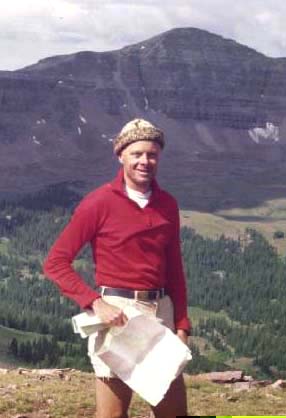


The pictures above show Jack on top of Red Knob Pass in
Utah's Uinta Mountains and a scene from Wyoming's Wind River
Mountans, and a view of the University of Utah Campus.
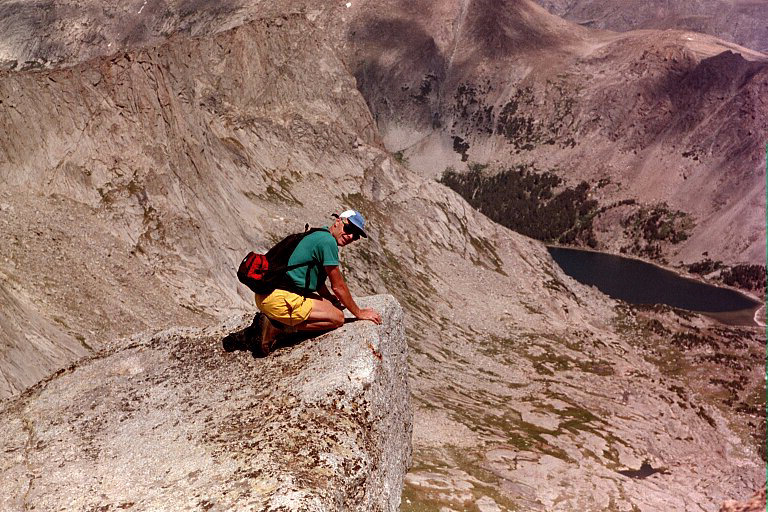
This picture shows Jack on top of East Temple Peak in the Wind
River Mountains

This is a photo of several members of the Wasatch Mountain Club in
the Wasatch Mountains many years before the current group of Utah
Chemists began to venture into the wilderness. Can you imagine hiking
in this kind of dress today?
A few pictures from excursions he has taken with some of his
chemistry faculty colleagues are shown below.
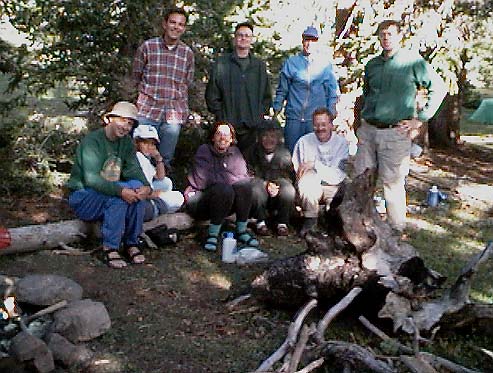
The above photo shows a group of chemistry faculty and family
members on a hike to King's
Peak in Utah's Uinta Mountains in 1997

In 2006, the "Chemists in the Mountains" group returned to
the Uinta Mountains for a trip starting at Moon
Lake.

This photo shows a group of Utah chemists in Wyoming's
Wind
River Mts. in 1998
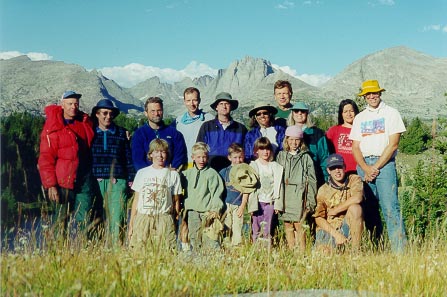
Another group of Utah chemists in the Wind
Rivers in 1999
These trips to the mountains have become a regular event. We
went again in 2000 and in
2001
as well as in 2003
and 2004.
If you wish to view some nice photos of a 60 mile hike that Jack
and his colleague, Chuck Wight, took across the Uinta Mountains in
northeast Utah during July 9-12, 2000, click here.
Above is the group from our 2005
hike to Skull Lake in the Wind Rivers
(Lee Ann Wight, Heather Wight, Erin Armentrout, Peter Harris,
Chuck Wight, Joel Harris, Tom Richmond, Peg Simons, Jack Simons, Greg
Owens, Mary Ann White, Peter Armentrout)

In 2007, the Chemists went to Poison Lake at the base of Wind
River Peak.
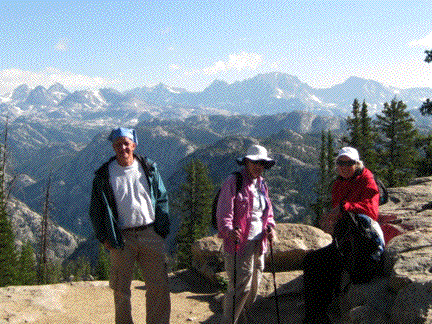
In 2009,
the Chemists again ventured into the Wind River Mts. of Wyoming; this
time to near Island Lk. Here, you see Poul Jørgensen, Peg, and
Poul's wife Lise on the hike in.
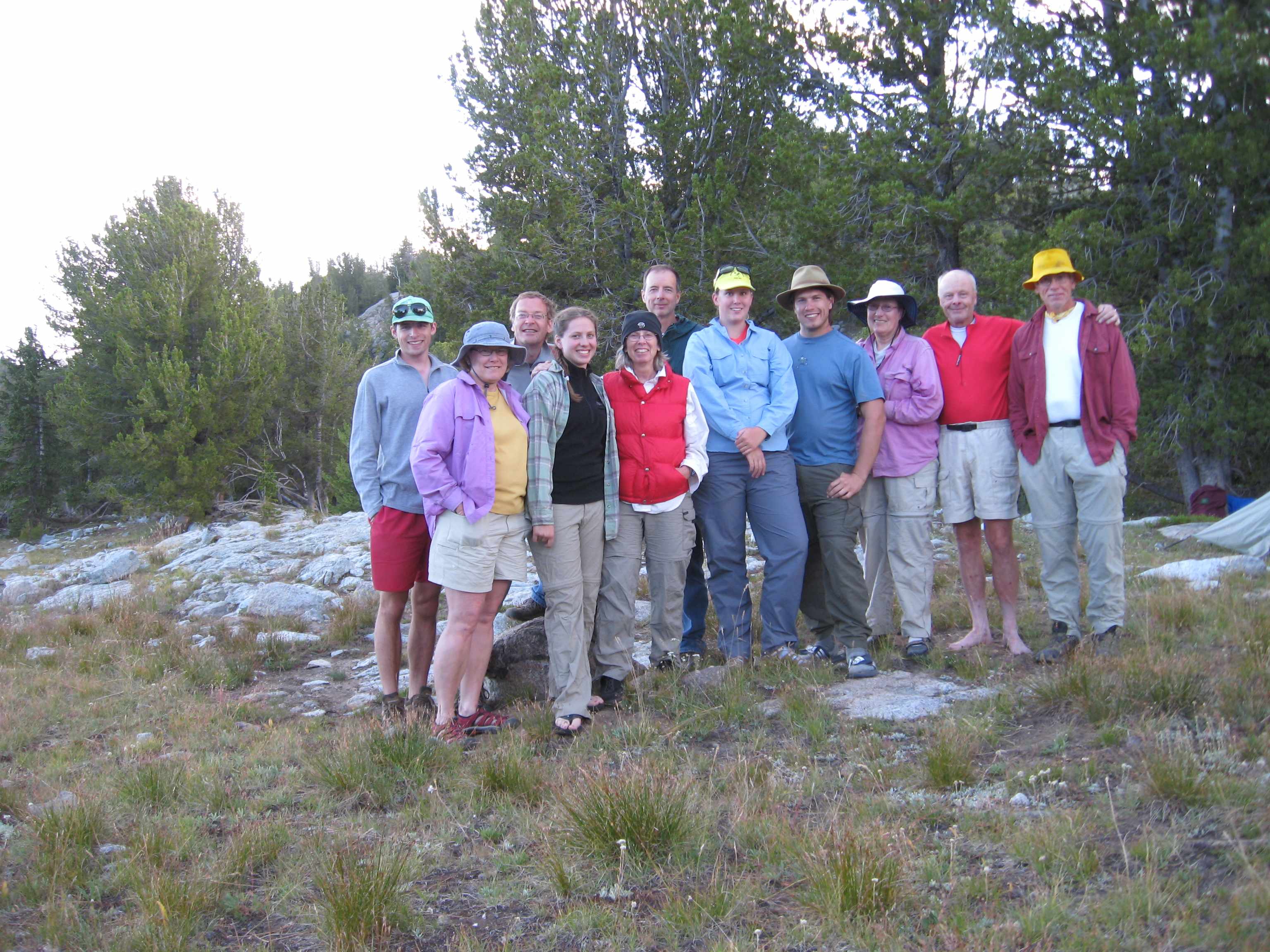
In 2010,
another group of Utah Chemists undertook an adventure into the Wind
River Mts of Wyoming.

In
2011, we went to the Uinta Mts in hopes of climbing King's Pk,
but the weather stopped us.
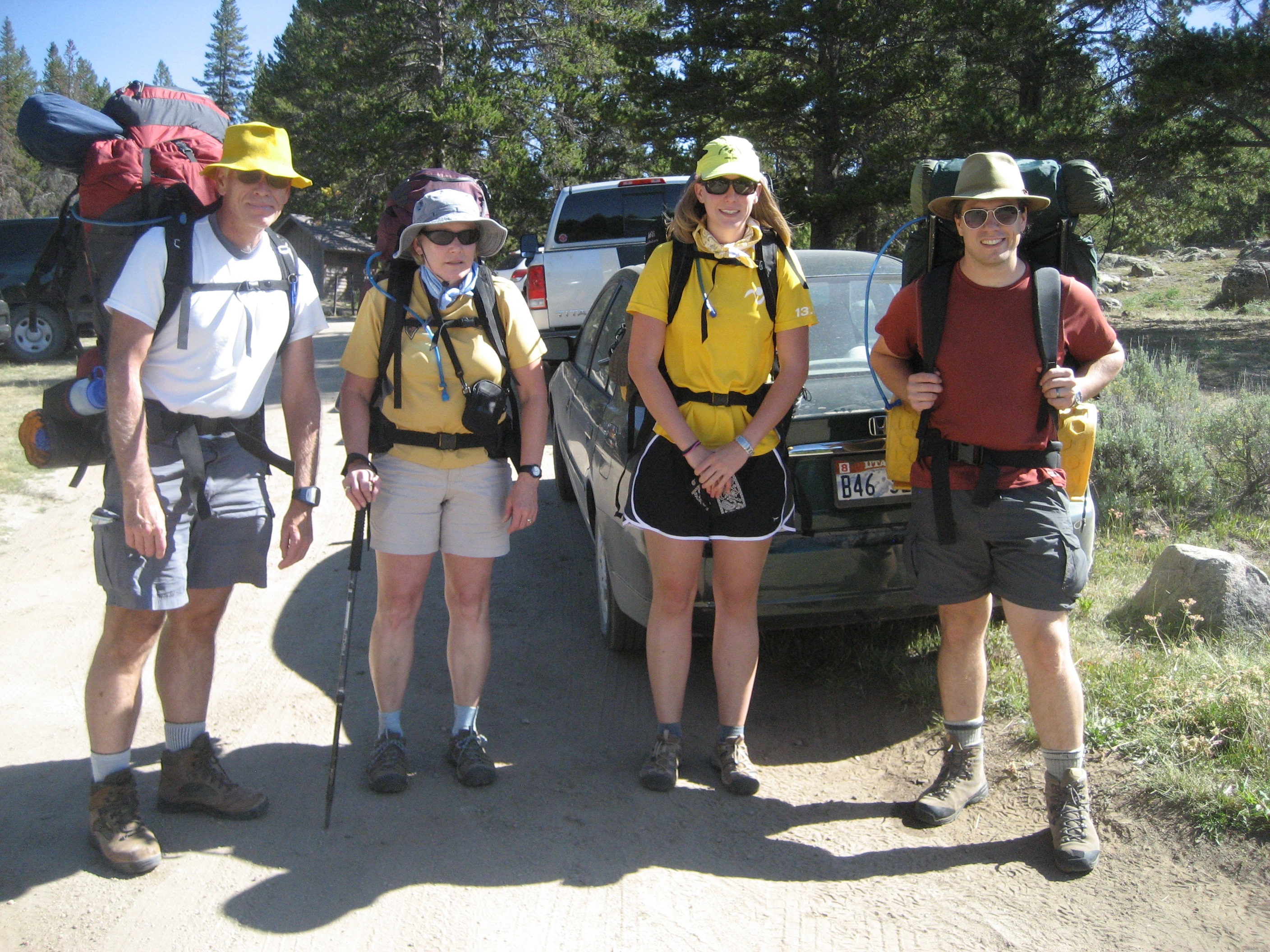
In
2012, we returned to the Wind River Mts and went in the Big Sandy
Opening to Rapid Lake.
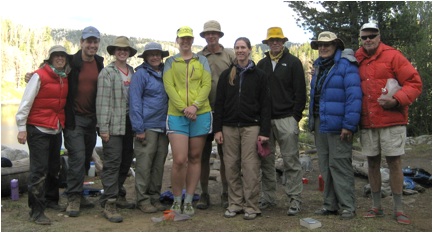
In 2013, we
entered the Winds at the Spring Creek Park Trailhead, which is rarely
used
To see pictures from hikes in later years, click here.
Jack and his wife, Peg, especially enjoy spending time at their
home in Brian Head, Ut.
from where the photos show below are taken.
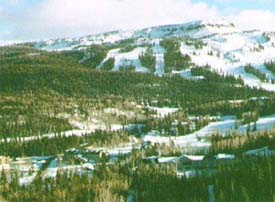
Looking from our home toward the Brian Head ski area.

Our home in December, 2002.

A red fox standing outside the sunroom of our home.

View from our home, fall 2003

Photo of Peg (third from right) and Jack (left) with friends
cross-country skiing at Cedar Breaks in 2005
On some occasions, Jack's
three brothers, come to visit him. Below is a picture of Tom,
Bob, Jim, and Jack when they went on a backpacking trip to Wyoming a
few years ago.
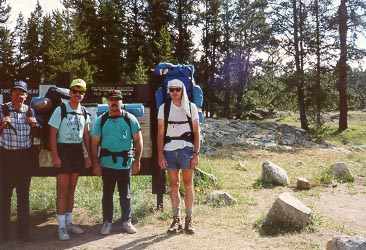
Research
group photos
Thus far in my career, I have been fortunate to have had more than
sixty Ph.D. students, postdoctoral associates, and visiting
scientists associated with my
research group. Below, I show you photos of the people who are
currently working with me in Utah as well as some of the more
frequent visitors shown below include scientists from other nations
and researchers with very wide ranging research interests.

Several of my ex graduate students and postdocs and collaborators
recently gathered for a reunion. A photo is shown above.
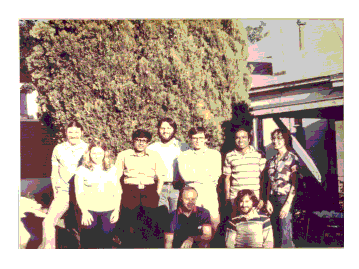
Old group photo with Ron Shepard, Judy Ozment, Debashis Mukherjee,
Jim Jensen, Jack Zlatko Bacie, Ajit Banerjee, David Chuljian, and Kay
Willden
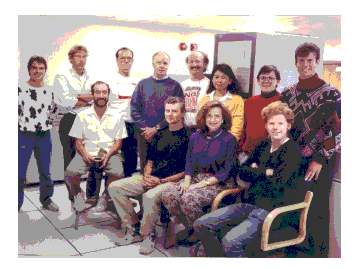
Old group photo with Jerry Boatz, Keld Bak, Ramon Hernandez,
Martin Feyereisen, Jack, Maciej Gutowski, Hugh Taylor, Michele
Pasker, Xiao Wang, Jon Rusho, Ed Earl, and Jim Anchell
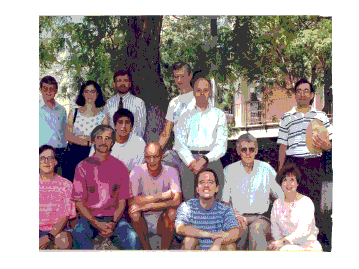
Old group photo with (front) Jon Rusho, Alex Boldyrev, Poul
Jørgensen, Mark Roberson, Jan Linderberg, Michele Pasker,
(back) Steve Fetherston, Berta Fernandez, Jeff Nichols, Nick
Gonzales, Maciej Gutowski, Jack, Vince Ortiz
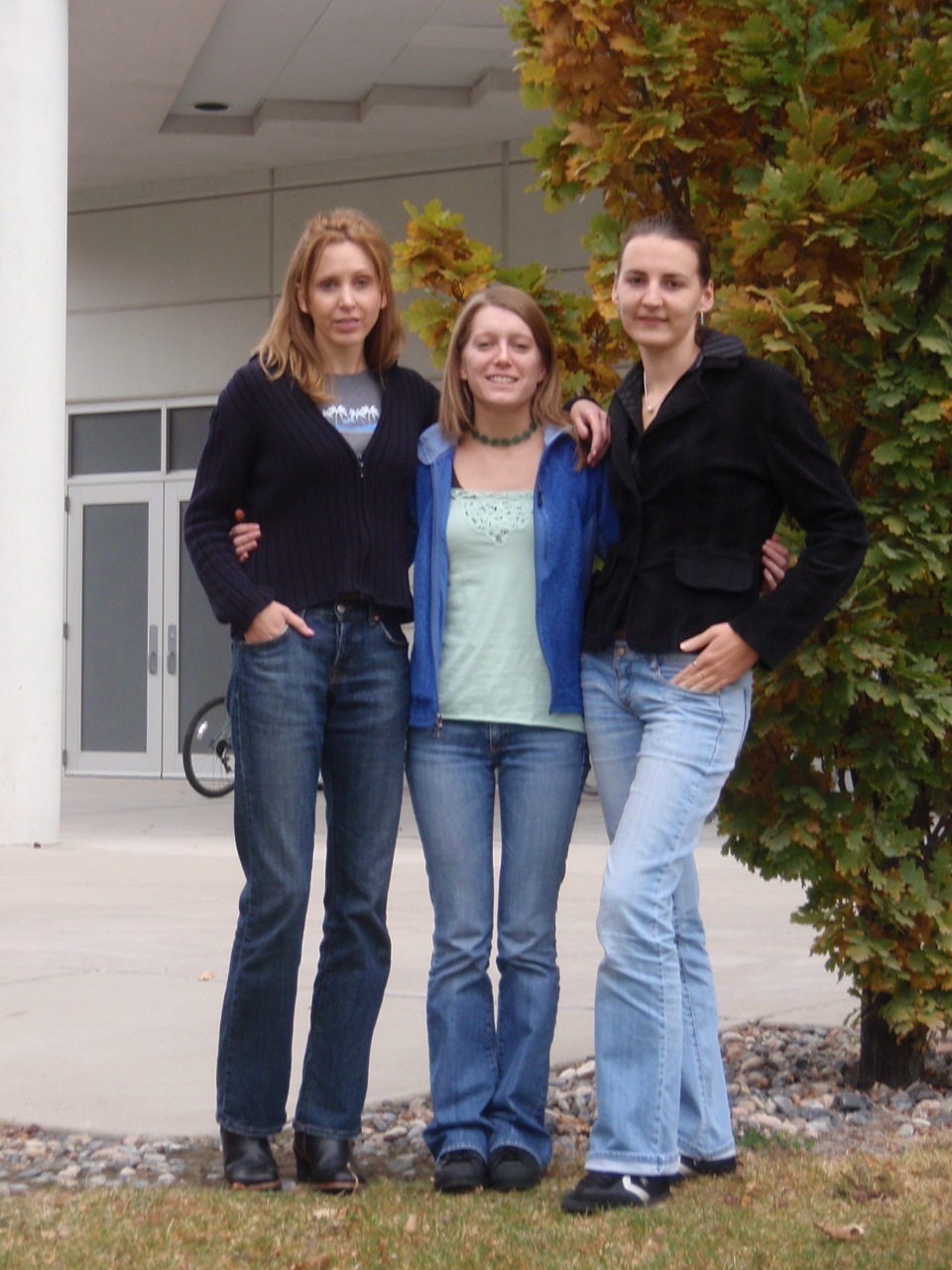
Jessica Swanson (Postdoc joint with the Voth group), Diane
Neff (Ph. D. student), and Sylwia Smuczynska (Visiting Ph. D.
student)
are current (2008) group members

Dr. Anthony Ketvirtis, currently on leave in Canada, is a
postdoctoral associate.

Piotr Skurski
is an Adjunct Professor from Poland where he heads up the Quantum
Chemistry Group at the University of Gdañsk.
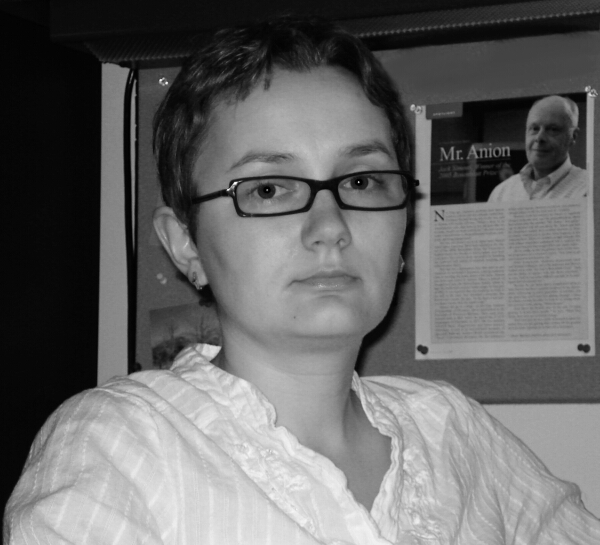
Dr. Monika Sobczyk (presently working in Utah as a postdoc)
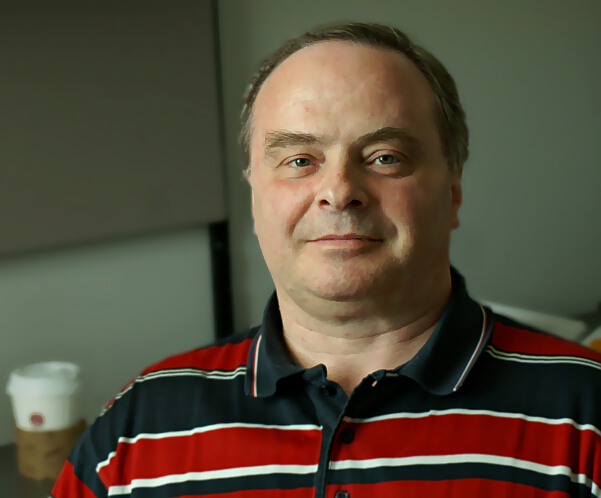
The late Professor Josef Kalcher, University of Gratz, Austria
visited us during the summer of 2006.

Professor,
Poul.Jørgensen,
of Aarhus University was one of my first collaborators when I began
my career at Utah and remains
one of my longest-term friends and collaborators.

Dr.
Ron Shepard, Argonne National Laboratory, was a Ph. D. student in
the group

Professor JanLinderberg,
Professor of Theoretical Chemistry, AarhusUniversity, Danmark (also
Adjunct Professor of Chemistry at Utah)

John Kenney, III was one of the first Ph.D. students in the
group
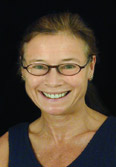
Prof. Jeanne
McHale, Washington State University, was a Ph. D. student in the
group

Prof.
Zlatko Bacic, New York University, was a Ph. D. student in the
group.
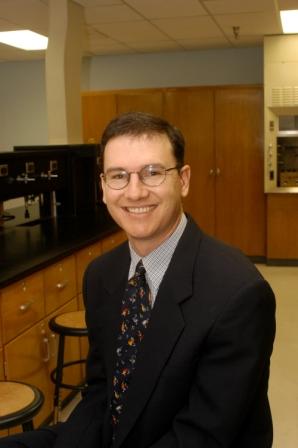
Prof. Mike
Salazar was a Ph. D. student in the group.
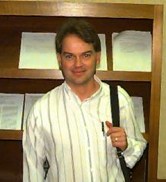
Dr. Jerry Boatz, was a postdoc in the group.
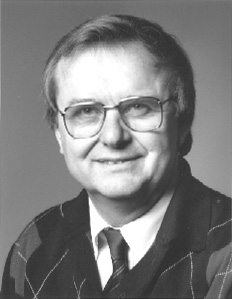
Professor Jens
Oddershede
of the Southern Danish University is currently the Rektor of this
University as the photo shown below will suggest.


Distinguished Professor Ken
Jordan, University of Pittsburgh
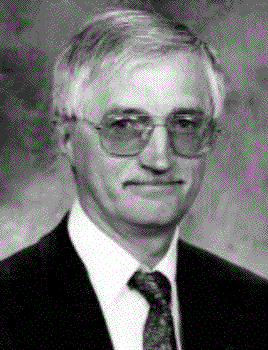
Professor Alex
Boldyrev, Utah State University

Professor
Mark Hoffmann, Univesity of North Dakota, was a postdoc in the
group.
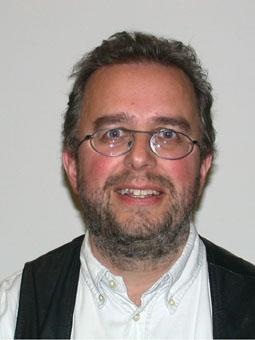
Professor
Jeppe Olsen, Aarhus University, was a postdoc in the group.

Dr.
Gina Frey, Director, Teaching Center, Washington University, was
a Ph D. student in the group.

Professor
Judy Ozment-Payne, Penn State University-Abington, did her Ph. D.
degree in the group.
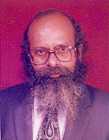
Professor Sambhu
Nath (Sam) Datta, IIT Bombay, was a postdoc in the group.
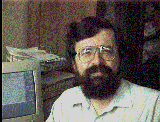
Professor Berny
Schlegel, Wayne State University
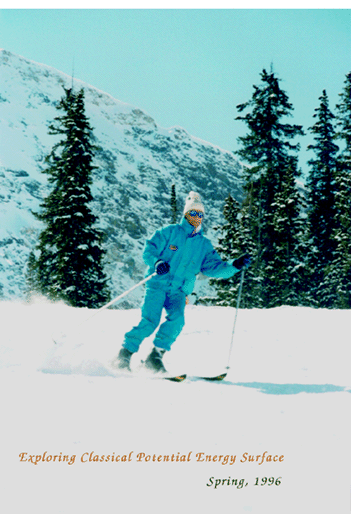

Professor Yngve
Öhrn, University of Florida, above skiing at Snowbird in
1996 and with his family at Steamboat in January, 2003.
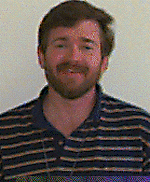
Dr. Jeff Nichols,
Director, Computer Science and Mathematics, Oak Ridge Natl.
Lab

Dan Goldfield did
undergraduate research in the group, but now he is a big guy in the
wine industry.

Prof.
Maciej
Gutowski, Professor of Theoretical Chemistry, Heriot-Watt
University, Edinburgh, Scotland.
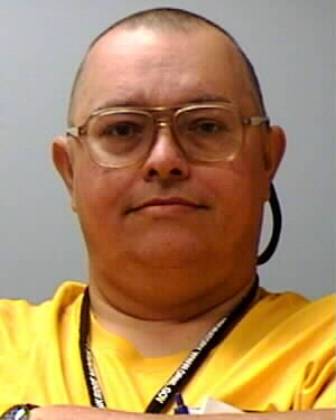
Dr.
Rick Kendall,
Director of the Scientific Computing Group at Oak Ridge National
Laboratory, was a Ph. D. student in the group.
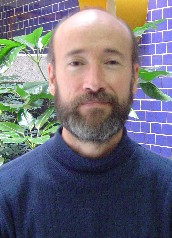
Professor Ramon Hernandez,
Centro de Investigaciones Quimicas, was a Ph. D. student in the
group.
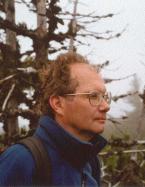
Professor
Grzegorz Chalasinski, University of Warsaw, was a postdoc in the
group.

Egon Nielsen was a postdoc in the group; he now teaches science in
Denmark
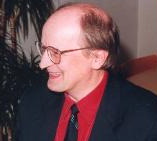
Dr. Esper Dalgaard was a postdoc in the group; he is now a
minister in Denmark
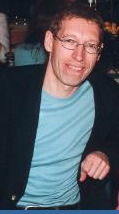
Dr. Keld Bak was a potdoc in the group; he now teaches science in
Denmark
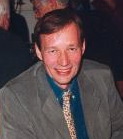
Preben Albertsen was a postdoc in the group; he now teaches
highschool science in Denmark
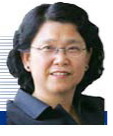
Dr. Xiao Wang was a postdoc in the group; she now is CEO of a
scientific software company.
If you would like to reach me, you could send me an e-mail at
simons@chemistry.utah.edu
This web page maintained by Jack
Simons


































































